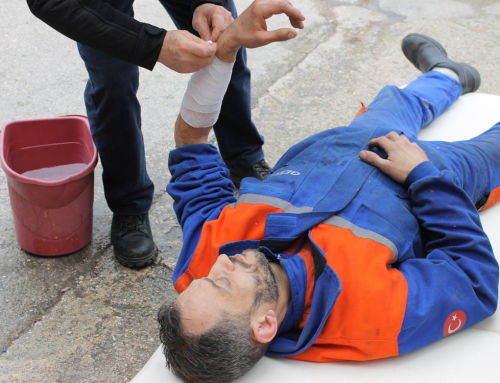Whether you’re working at a construction site or walking down the road, the risk of injuries and accidents is always there! Statistics suggest that over 3 million Canadians are injured every year. Every day, around 9,300 people sustain injuries that are severe enough to require medical attention.
It’s always better to be prepared. Having at least one person with first aid training at your workplace or home can make a big difference! But why depend on someone else when you can be that person?
Here are some basic first aid procedures everyone should know about.
1. CPR
Perhaps the most critical first aid procedure, a CPR can quite literally save a life. CPR is performed when an individual is suffering from a cardiac arrest, that is, their heart stops pumping blood. The process involves rapid chest compressions to restore breathing. However, if you’re untrained for the task, we recommend finding someone else as the process is extremely critical and failure to do it the right way can result in instant death.
2. Treatment For Bleeding
Regardless of its severity, almost every bleeding can be controlled with proper care. While mild bleeding usually stops on its own, appropriate medical care is required for severe bleeding as it can result in blood loss.
If you’re dealing with a bleeding wound, start treating it by covering it with a cloth and then applying direct pressure to restrict blood flow. Keep adding layers of cloth to create clots and stop the blood flow.
3. Treating Burns
The first step is to eliminate the cause of burning and take the victim to a safer environment to prevent further injuries. Wash the burn with cool water for a few minutes. Avoid applying ice on the burnt area as it’ll only produce blisters. If needed, cover the wound with a light bandage and give ibuprofen for pain relief.
4. First Aid Treatment for Fractures
We recommend treating all severe musculoskeletal injuries as fractures until an X-ray is done. If you’re giving first aid to a person who might have broken his bone, don’t try to straighten it as it’ll put more strain on the bone. Instead, use padding and splint for stabilizing the broken limb and keeping it immobile until the paramedics arrive. Put an ice pack on the injury, but don’t place it directly on the skin. A broken limb can be extremely painful, which is why we recommend giving naproxen or ibuprofen to alleviate the pain.
If you’re looking for a place to learn the basic first aid procedures in British Columbia, get in touch with Metro Safety. We offer standard first aid treatments and CPR courses to make sure you’re well prepared for an emergency.
Contact us today for details!








